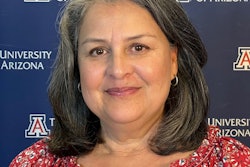Responding to A Growing Market
Cal State-Northridge minor trains students to cover Spanish-speaking communities.
By Dina Horwedel
For the first time in Denver radio history, a Spanish-language station finished atop the Arbitron ratings. Earlier this year, KXPK-FM, known as
“La Tricolor,” ranked the station first among 18- to 49-year-olds and 25- to 54-year-olds, considered to be radio’s two most-coveted listener groups. And two years ago, industry giant Clear Channel Communications began converting 25 of its 1,200 radio stations to a Spanish-language format, acknowledging the influence of a growing Hispanic audience.
One Hispanic-serving institution is keeping pace with this trend. California State University-Northridge launched the nation’s first interdisciplinary minor in Spanish-language journalism last fall to prepare its journalism students to work in both Spanish-language and mainstream media, with the goal of improving coverage of Spanish-speaking communities.
The program has approximately 30 students pursuing the minor. Overall, 700 CSUN students are enrolled in the journalism program.
“We really wanted to catch up to what was happening,” says Dr. Jose Luis Benavides, program director of the Spanish-language minor. “In the late ’90s and in early 2000, bilingual students in the Los Angeles metro area realized there was a huge market for them if they were able to apply for jobs in the Spanish-language media.”
Benavides says students in the program study Spanish in addition to journalism, but the studies go beyond just language.
“They also study the cultural aspects of Spanish; the need to know something about the communities they are covering to be successful,” he says. In addition, students take courses in Chicano and Central American studies to understand the major Hispanic cultures in California.
When it comes to looking for jobs, the choices among Spanish-language media are limited. But that may be changing. Univision, the nation’s leading Spanishlanguage media company, claims “to have the most-watched evening news program in the nation.” Univision produces a range of programming through TV, radio and the Internet, and claims to reach 99 percent of all the country’s Hispanic households.
Other Spanish-language media, including Telemundo and a host of magazines, newspapers and radio stations, offer journalism graduates additional opportunities.
The CSUN program, which received a $25,000 grant from the Scripps Howard Foundation to support its growth, differs from similar programs at Florida International University, the University of El Paso and Miami University (Fla.), in that the Northridge program is targeted to American journalists who will be covering Spanish-speaking communities in the United States.
“The more we pay attention to people doing journalism in the U.S., the better able we are to produce journalists to cover the community that can understand their issues,” Benevides says.
A Hands-On Approach
To increase empathy and understanding of cross-border issues, CSUN journalism department chair Dr. Kent Kirkton conceived of a community journalism and outreach project that in April took nine students to Tijuana, Mexico, to report on AIDS patients living in a hospice.
The students then published “Stories Against the Silence: AIDS in the Latin Community,” a 48-page special edition of El Nuevo Sol, CSUN’s campus Spanish-language newspaper. In addition to the printed product, students compiled a multimedia collection of radio, print, video, Web and PowerPoint reportage and opinion.
Adolfo Flores, a junior who participated in the project, says its hands-on journalism practice was invaluable.
“What I learned about journalism in the two years that I’ve been in college is nothing compared to what I learned in those few days,” he says.
Organizations such as the National Association of Hispanic Journalists’ Parity Project continue to do their part to improve coverage of and interaction with diverse communities by placing Hispanic journalists in newsrooms across the country.
“We are concentrating on English-language media through this particular program because that’s where most decision-makers in this country form their opinions of others, including Latinos,” says Kevin Olivas, the Parity Project’s director. But he’s not discounting the importance of Spanish-language outlets. “If people cannot find coverage of stories that pertain to them in the mainstream media, then they will go to the Spanish-language media,” he says.
“To me that makes the Spanish-language media needed and relevant.”
© Copyright 2005 by DiverseEducation.com















